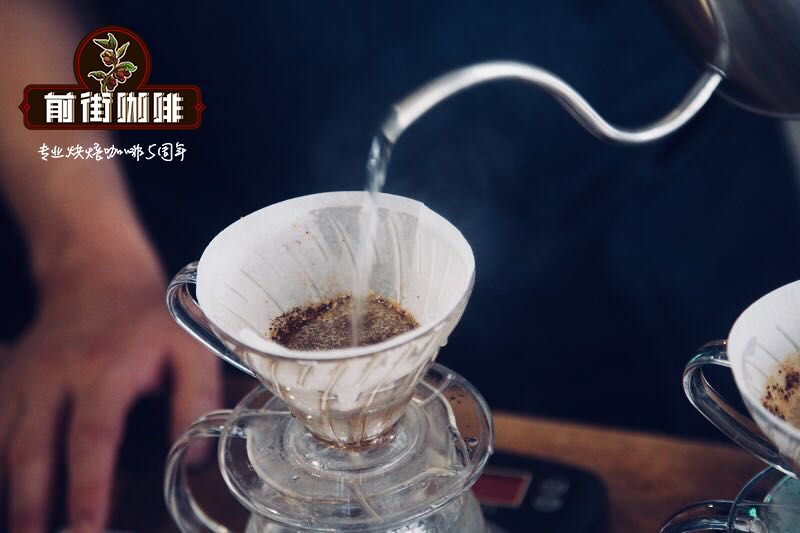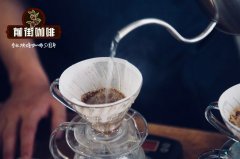Ugandan Coffee Bean varieties introduction to Ugandan coffee varieties

Professional coffee knowledge exchange more coffee bean information please follow the coffee workshop (Wechat official account cafe_style)
About handling:
During the harvest season, Kyagalanyi encourages farmers to send cherries to their latest wet mills instead of pulping them by hand on their farms. This has enabled the programme to strengthen its control over processing activities which can be challenging in the region as it often rains during the harvest season. Most farmers live 50 kilometers away from the laundry. Because of the long distance, Kyagalanyi has a truck that provides free transportation and can visit each farmer group once or twice a week during the harvest season. As the coffee tree blossoms many times, the harvest season is quite long (4-5 months). Farmers usually pick coffee at least once a week.
Kyagalanyi has a 95% red cherry policy. Farmers are required to bring only fully ripe cherries, which are checked at each collection point. If the quality is not good enough, farmers will have to sort cherries at coffee collection sites and will not be bought until the coffee is 95% red. Kyagalanyi provides tarpaulins and luggage racks to help with sorting.
This kind of coffee is processed by natural methods. Once delivered, the coffee floats and is moved to a high African bed in a greenhouse to dry. It will stay here for about 15 days, and the drying is controlled by turning the coffee regularly and keeping the cherries at the same depth on the bed. The coffee dries until the optimum humidity is reached.
Variety:
Most farmers in the area grow ancient rootstocks SL28 and SL34, occasionally dotted with SL14, Nyasaland and Bugisu.
SL28/34/14-Scott Laboratories, a Kenyan-based research institute, developed a number of varieties under contracts from 1934 to 1963. Scott Lab (Scott Labs) has developed a variety of SL varieties, mainly based on Moka and bourbon varieties brought to Kenya by Scottish and French delegations.
Some of the more successful SL (Scott laboratories). Do you understand?) Varieties are still widely cultivated in Kenya, Tanzania and Uganda today, however, SL 28 and SL 34 are most relevant to professional coffee. It is worth noting that by "development" we mean that the following varieties were "selected" by the Scott lab over a period of time. They are not "hybrids"-although they are technically "bred" in the "laboratory".
SL28-1931 from Tanganyika D. R, sl28 has become ubiquitous throughout East Africa and is considered to be an unusual cup quality. Broad bean has a wide range of varieties and its yield is relatively low. Although this is not the evidence we can find, some sources say that Scott Lab cross-mutated the French mission of Mocha and Yemeni Typica to produce SL 28 variants. Regardless of the exact genetic composition, their initial goal is almost certainly to create a high-quality, reasonably productive and drought-resistant plant. SL 28 just hit the first target.
SL34 is a variety of French envoys, originating from the Loresho plantation in Cabette. SL34 has broad leaves and a bronze tip. It is widely planted all over Kenya. Sl34 has been paid attention to because of its high productivity and large height range under different climatic conditions. It is also said to be able to withstand drought and heavy rainfall.
SL14-SL14 was selected from a single tree species labeled drought-resistant II (D.R. II) in 1936. Drought resistance is a significant characteristic of SL14. The historical record of the origin of D.R. II has been lost, but the seedlings were established in Kabete in 1933 and then widely distributed in the eastern part of Kenya's East African Rift Valley. This diversity is now common in Kenya and Uganda.
Nyasaland, a bourbon-typica (related to typica) variety, is one of the oldest Arabica coffee varieties introduced into Africa. The variety originated from Typica and was introduced to Nyasaland (present-day Malawi) from Jamaica in 1878. By 1891, the coffee industry in Malawi was booming, but due to the limitations of climatic conditions, the coffee industry in Malawi finally declined. High incidence of pests, including white stem borer, and inexperienced farmers allowed the plant to overgrow in the first few years, leading to a sharp drop in production that eventually led Malawi to give up coffee.
Nyassaland was brought to Uganda from Malawi in 1910, where farmers are also struggling with varieties. Early failures led to the widespread cultivation of Robusta in Uganda. But in recent years, there has been a small resurrection of Arabica on the slopes of Mount Elgon, where Nyasaland (locally known as Bugisu) is an important variety of smallholder farmers.
Bugisu is a variety of local Nyassaland. Its name comes from this area, where it is widely used to indicate that a kind of coffee is processed by washing rather than by natural methods.
END
Important Notice :
前街咖啡 FrontStreet Coffee has moved to new addredd:
FrontStreet Coffee Address: 315,Donghua East Road,GuangZhou
Tel:020 38364473
- Prev

Uganda handmade coffee recommended Uganda handmade coffee how to drink Ugandan handmade coffee bitter
For more information on coffee beans, follow the coffee workshop (official Wechat account cafe_style) for many, Uganda may not be the first country to think of high-quality Arabica coffee: it is traditionally considered to be the producer of robusta coffee. In many parts of the country, however, the challenge is more about infrastructure, history and knowledge.
- Next

What is the recommendation of El Salvador Manor Coffee beans? introduction to El Letillo Manor
Professional coffee knowledge exchange more coffee bean information please follow the coffee workshop (Wechat official account cafe_style) Finca El Retiro was founded by Fernando Alberto Pacas Figueroa in 1927. The farm has been handed down for four generations and is now owned and managed by Alfredo Parks and his family: this is their family's fertile Apaneia in El Salvador-
Related
- Beginners will see the "Coffee pull flower" guide!
- What is the difference between ice blog purified milk and ordinary milk coffee?
- Why is the Philippines the largest producer of crops in Liberia?
- For coffee extraction, should the fine powder be retained?
- How does extracted espresso fill pressed powder? How much strength does it take to press the powder?
- How to make jasmine cold extract coffee? Is the jasmine + latte good?
- Will this little toy really make the coffee taste better? How does Lily Drip affect coffee extraction?
- Will the action of slapping the filter cup also affect coffee extraction?
- What's the difference between powder-to-water ratio and powder-to-liquid ratio?
- What is the Ethiopian local species? What does it have to do with Heirloom native species?

